
White Wolf Entertainment AB, formerly White Wolf Publishing, was an American roleplaying game and book publisher. The company was founded in 1991 as a merger between Lion Rampant and White Wolf Magazine, and was initially led by Mark Rein-Hagen of the former and Steve Wieck and Stewart Wieck of the latter. White Wolf Publishing, Inc. merged with CCP Games in 2006. White Wolf Publishing operated as an imprint of CCP hf, but ceased in-house production of any material, instead licensing their properties to other publishers. It was announced in October 2015 that White Wolf had been acquired from CCP by Paradox Interactive. In November 2018, after most of its staff were dismissed for making controversial statements, it was announced that White Wolf would no longer function as an entity separate from Paradox Interactive.
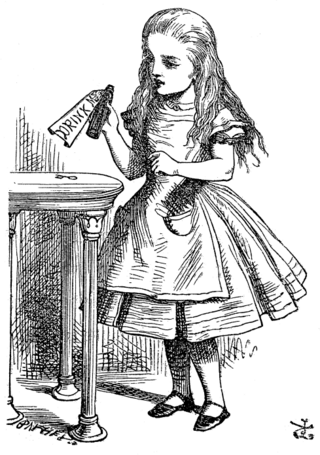
Alice is a fictional character and the main protagonist of Lewis Carroll's children's novel Alice's Adventures in Wonderland (1865) and its sequel, Through the Looking-Glass (1871). A child in the mid-Victorian era, Alice unintentionally goes on an underground adventure after falling down a rabbit hole into Wonderland; in the sequel, she steps through a mirror into an alternative world.

A story within a story, also referred to as an embedded narrative, is a literary device in which a character within a story becomes the narrator of a second story. Multiple layers of stories within stories are sometimes called nested stories. A play may have a brief play within it, such as in Shakespeare's play Hamlet; a film may show the characters watching a short film; or a novel may contain a short story within the novel. A story within a story can be used in all types of narration including poems, and songs.
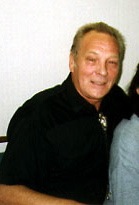
Brian Lumley was an English author of horror fiction. He came to prominence in the 1970s writing in the Cthulhu Mythos created by American writer H. P. Lovecraft but featuring the new character Titus Crow, and went on to greater fame in the 1980s with the best-selling Necroscope series, initially centered on character Harry Keogh, who can communicate with the spirits of the dead.

Alice Pleasance Hargreaves was an English woman who, in her childhood, was an acquaintance and photography subject of Lewis Carroll. One of the stories he told her during a boating trip became the classic 1865 children's novel Alice's Adventures in Wonderland. She shared her name with "Alice", the story's protagonist, but scholars disagree about the extent to which the character was based upon her.
A parallel universe, also known as an alternate universe, parallel world, parallel dimension, alternate reality, or alternative dimension, is a hypothetical universe co-existing with one's own, typically distinct in some way. The sum of all potential parallel universes that constitute reality is often called the "multiverse". Another common term for a parallel universe is "another dimension", stemming from the idea that if the 4th dimension is time, the 5th dimension—a direction at a right angle to the fourth—is a direction into any of the alternate spacetime realities.

Are You Afraid of the Dark? is a children's horror anthology television series created by D. J. MacHale and Ned Kandel. The original series aired on Nickelodeon in the United States from August 15, 1992 to February 3, 1996, and also on YTV in Canada. The pilot episode first aired on October 31, 1990 on YTV, and as a Halloween special on October 25, 1991 on Nickelodeon. It led to two revival series, with the first airing from February 6, 1999 to June 11, 2000, and the second airing from October 11, 2019 to August 13, 2022.
A plot twist is a literary technique that introduces a radical change in the direction or expected outcome of the plot in a work of fiction. When it happens near the end of a story, it is known as a twist ending or surprise ending. It may change the audience's perception of the preceding events, or introduce a new conflict that places it in a different context. A plot twist may be foreshadowed, to prepare the audience to accept it, but it usually comes with some element of surprise. There are various methods used to execute a plot twist, such as withholding information from the audience, or misleading them with ambiguous or false information. Not every plot has a twist, but some have multiple lesser ones, and some are defined by a single major twist.

Galileo Galilei is an opera based on excerpts from the life of Galileo Galilei, which premiered in 2002 at Chicago's Goodman Theatre, as well as subsequent presentations at the Brooklyn Academy of Music's New Wave Music Festival and London's Barbican Theatre. The music is by Philip Glass, with libretto and original direction by Mary Zimmerman and Arnold Weinstein. The piece is presented in one act, consisting of ten scenes without break.
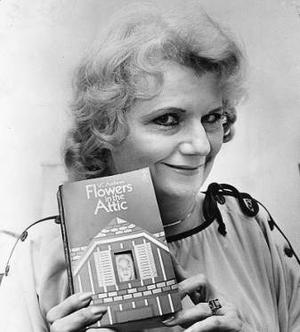
Cleo Virginia Andrews, better known as V. C. Andrews or Virginia C. Andrews, was an American novelist. She was best known for her 1979 novel Flowers in the Attic, which inspired two movie adaptations and four sequels. While her novels are not classified by her publisher as Young Adult, their young protagonists have made them popular among teenagers for decades. After her death in 1986, a ghostwriter who was initially hired to complete two unfinished works has continued to publish books under her name.

The Crimson King, known to some as Los' or Ram Abbalah, is a fictional character created by Stephen King and the main antagonist of King's eight-volume Dark Tower series, as well as the novels Insomnia (1994) and Black House (2001). Described as "Gan's crazy side", the Crimson King is the ultimate ruler of the Red, and the archetypal embodiment of evil in Stephen King's fictional multiverse. His goal is to topple the Dark Tower which serves as the linchpin of time and space, destroying the multitude of universes which revolve around it so that he can rule in the primordial chaos which follows.

The Escapist is a superhero character created by Michael Chabon in the 2000 novel The Amazing Adventures of Kavalier & Clay. In the novel, the Escapist is a fictional character created by the comics writer protagonists. The character later featured in the metafictional work Michael Chabon Presents the Amazing Adventures of the Escapist and Brian K. Vaughan's comic The Escapists.

Lewis Carroll's books Alice's Adventures in Wonderland (1865) and Through the Looking-Glass (1871) have been highly popular in their original forms, and have served as the basis for many subsequent works since they were published. They have been adapted directly into other media, their characters and situations have been appropriated into other works, and these elements have been referenced innumerable times as familiar elements of shared culture. Simple references to the two books are too numerous to list; this list of works based on Alice in Wonderland focuses on works based specifically and substantially on Carroll's two books about the character of Alice.
Leslie Barringer (1895–1968) was an English editor and author of historical novels and historical fantasy novels, best known for the latter.
Dream worlds are a commonly used plot device in fictional works, most notably in science fiction and fantasy fiction. The use of a dream world creates a situation whereby a character is placed in a marvellous and unpredictable environment and must overcome several personal problems to leave it. The dream world also commonly serves to teach some moral or religious lessons to the character experiencing it – a lesson that the other characters will be unaware of, but one that will influence decisions made regarding them. When the character is reintroduced into the real world, the question arises as to what exactly constitutes reality due to the vivid recollection and experiences of the dream world.
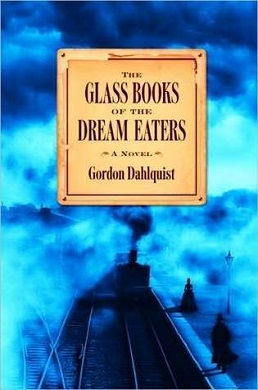
The Glass Books of the Dream Eaters is the first novel by playwright Gordon Dahlquist and was published in the US on August 1, 2006. A first sequel, The Dark Volume, was published in the UK by Penguin on May 1, 2008. A second sequel, The Chemickal Marriage was released in 2012.
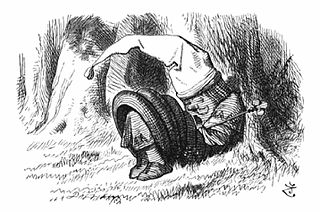
The Red King is a character who appears in Lewis Carroll's 1871 fantasy novel Through the Looking-Glass.
Gordon Dahlquist is an American playwright and novelist. A native of the Pacific Northwest, Dahlquist has lived and worked in New York City since 1988. His plays, which include Messalina and Delirium Palace, have been performed in New York and Los Angeles. Graduate of Reed College and Columbia University’s School of the Arts. He is an alumnus of New Dramatists.
The Orphan's Tales is a fantasy series by Catherynne M. Valente with illustrations by Michael Kaluta. The two novels of the series, In the Night Garden and In the Cities of Coin and Spice, are in turn split into two books apiece. While three of these four books begin with a story told by the same young woman, her stories branch out into other stories, often narrated by a completely different character.

Two Temple Place, known for many years as Astor House, is a Neo-Gothic building situated near Victoria Embankment in central London, England. It is known for its architecture, and contains notable works by the likes of William Silver Frith, Sir George Frampton, Nathaniel Hitch and Thomas Nicholls.














